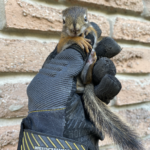During the winter months, starlings and sparrows often flock together in large numbers to seek out food and shelter. They can be seen foraging for seeds and insects in fields, gardens, and parks.
Starlings are known for their acrobatic flying abilities and often engage in aerial displays, such as swirling and diving in large groups. They are also known for their mimicry skills and can imitate a variety of sounds, including other bird calls and even human speech.
Sparrows, on the other hand, tend to be more sedentary during the winter months. They can be seen perched on rooftops, trees, and fences, keeping an eye out for potential food sources. They are also known for their distinctive chirping songs, which they use to mark their territory and attract mates.
Both starlings and sparrows are able to adapt to a wide range of environments, including urban areas. In the winter, they may seek out warm, sheltered spots to roost, such as barns, sheds, and even the eaves of buildings.
Despite the challenges of the winter season, these hardy birds are able to thrive and continue their important role in the ecosystem. Whether foraging for food, singing their distinctive songs, or flocking together in large numbers, starlings and sparrows are a common sight during the colder months.









